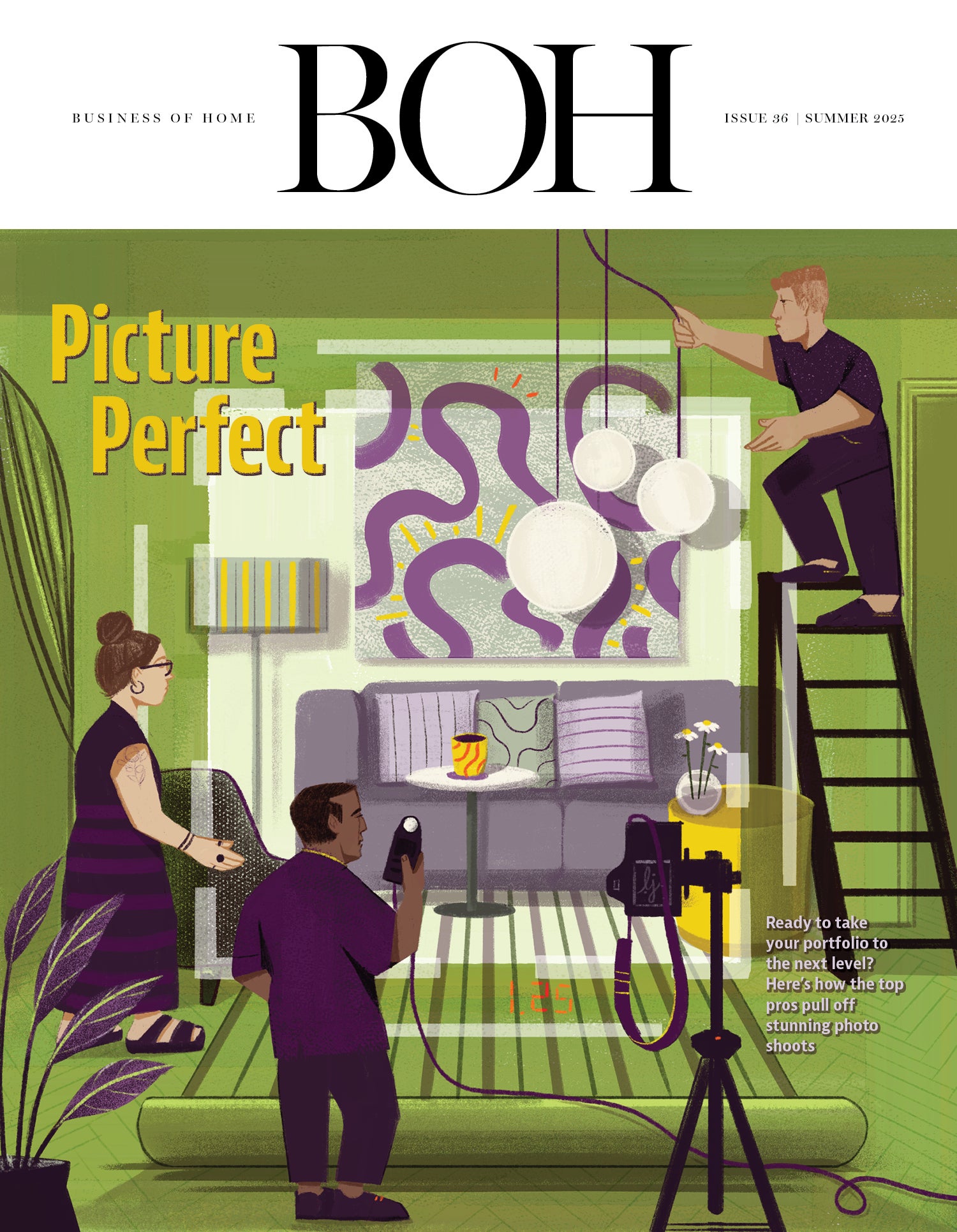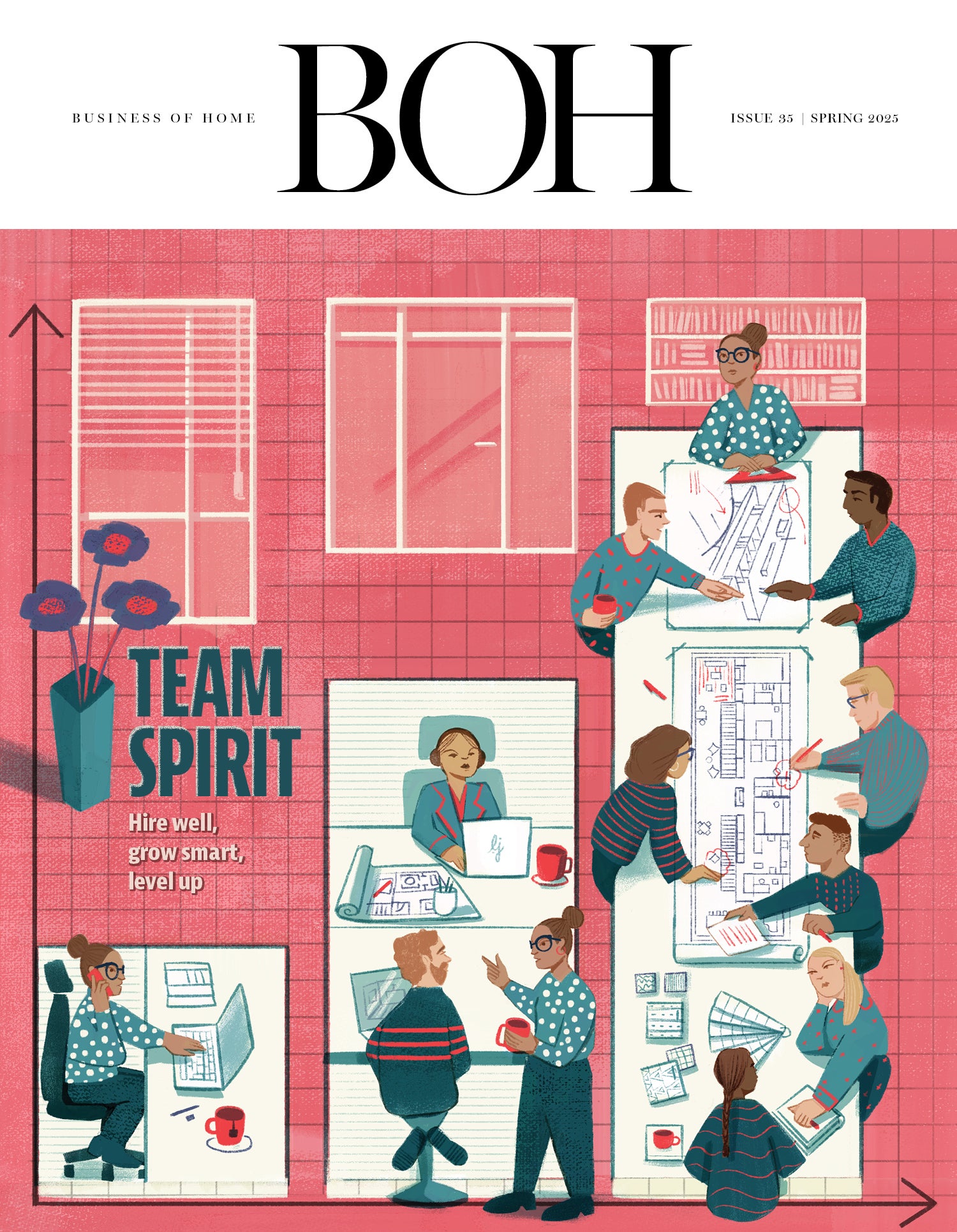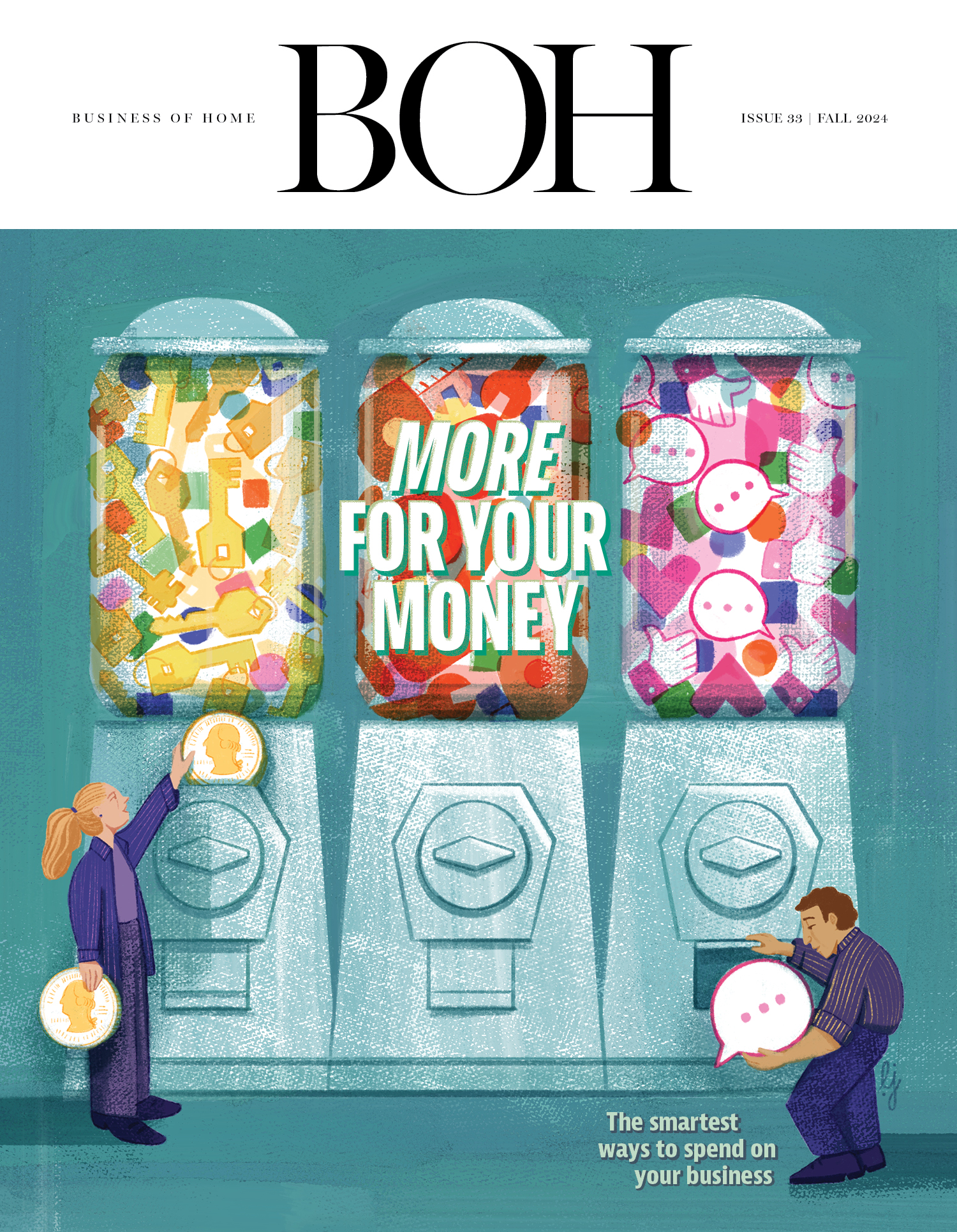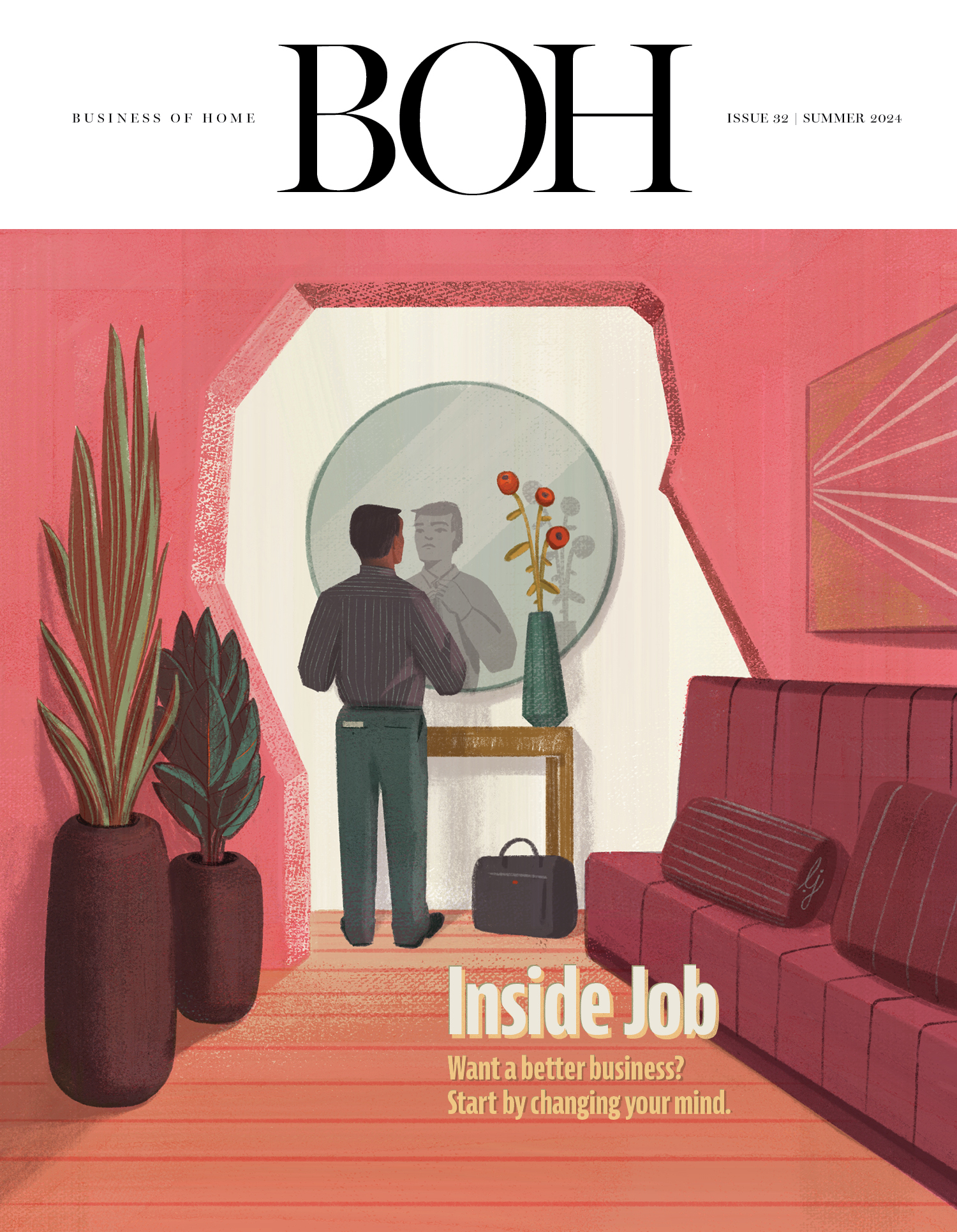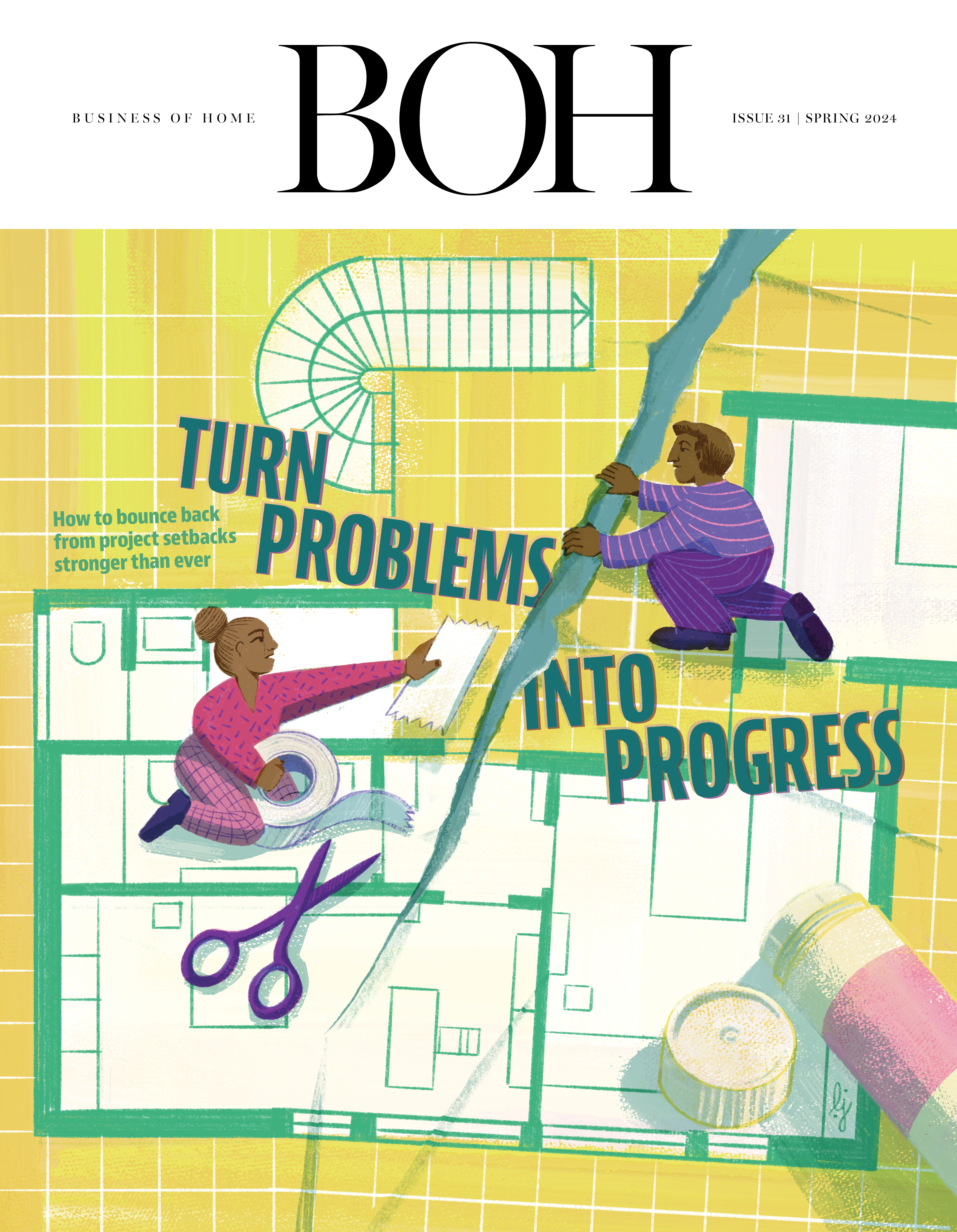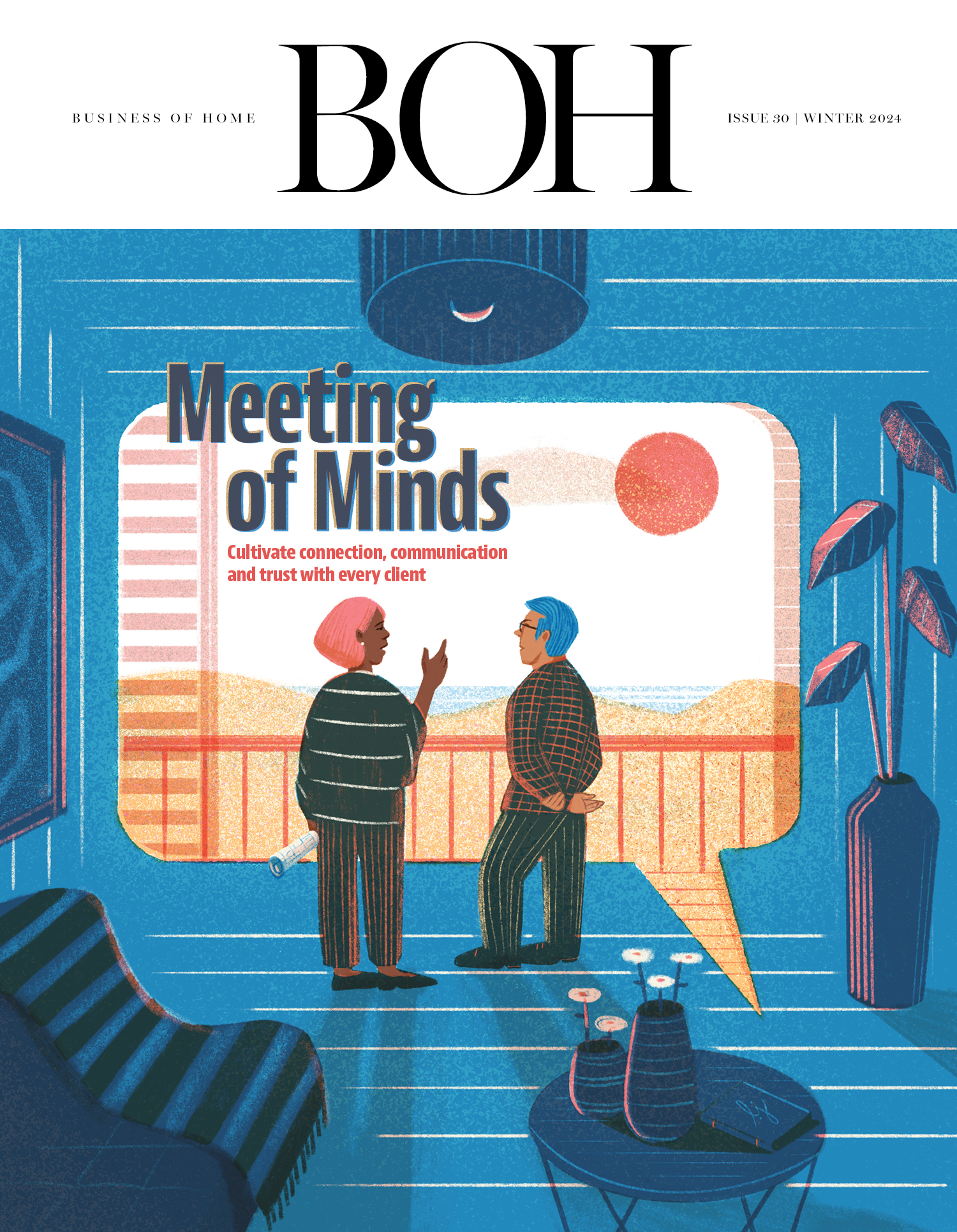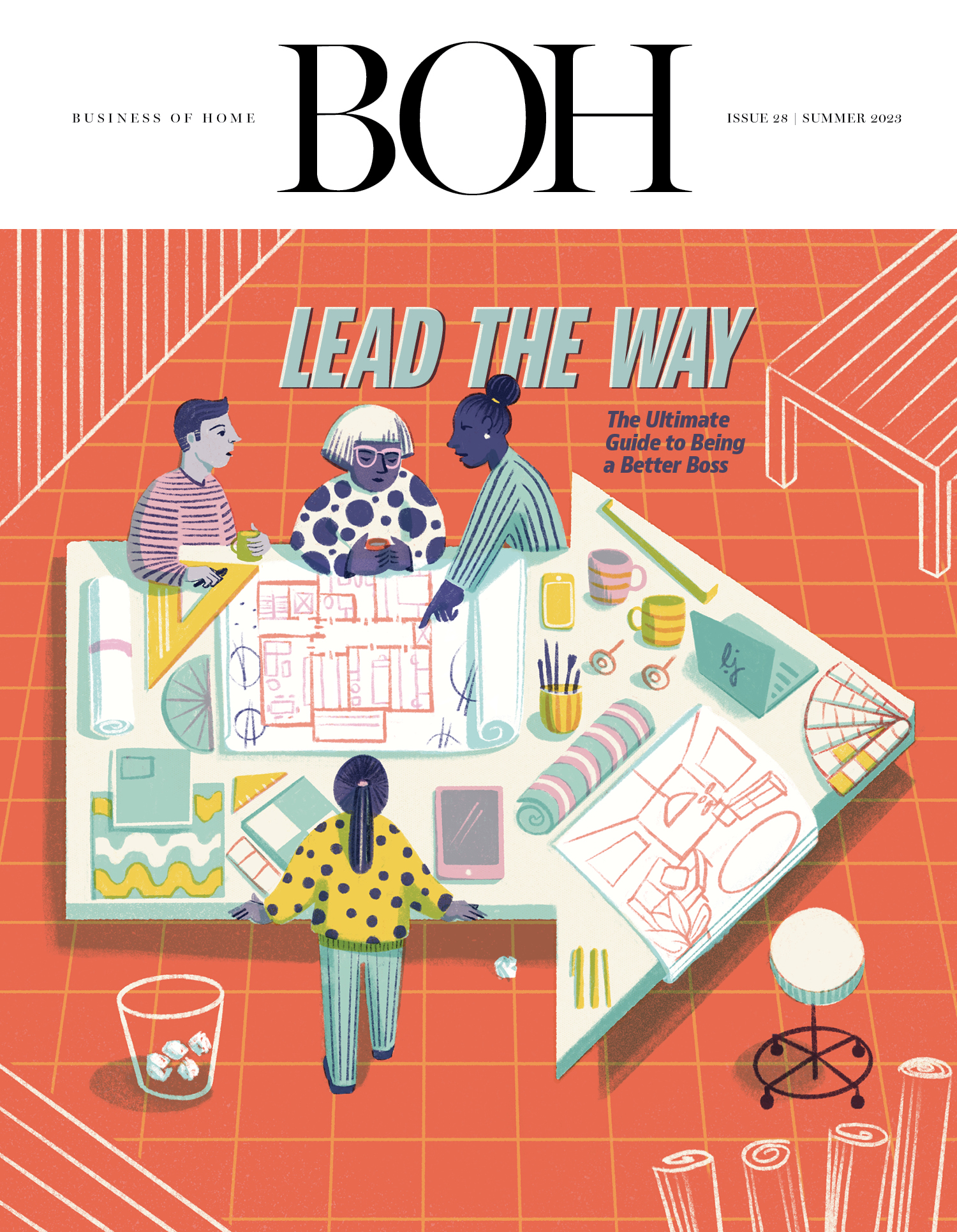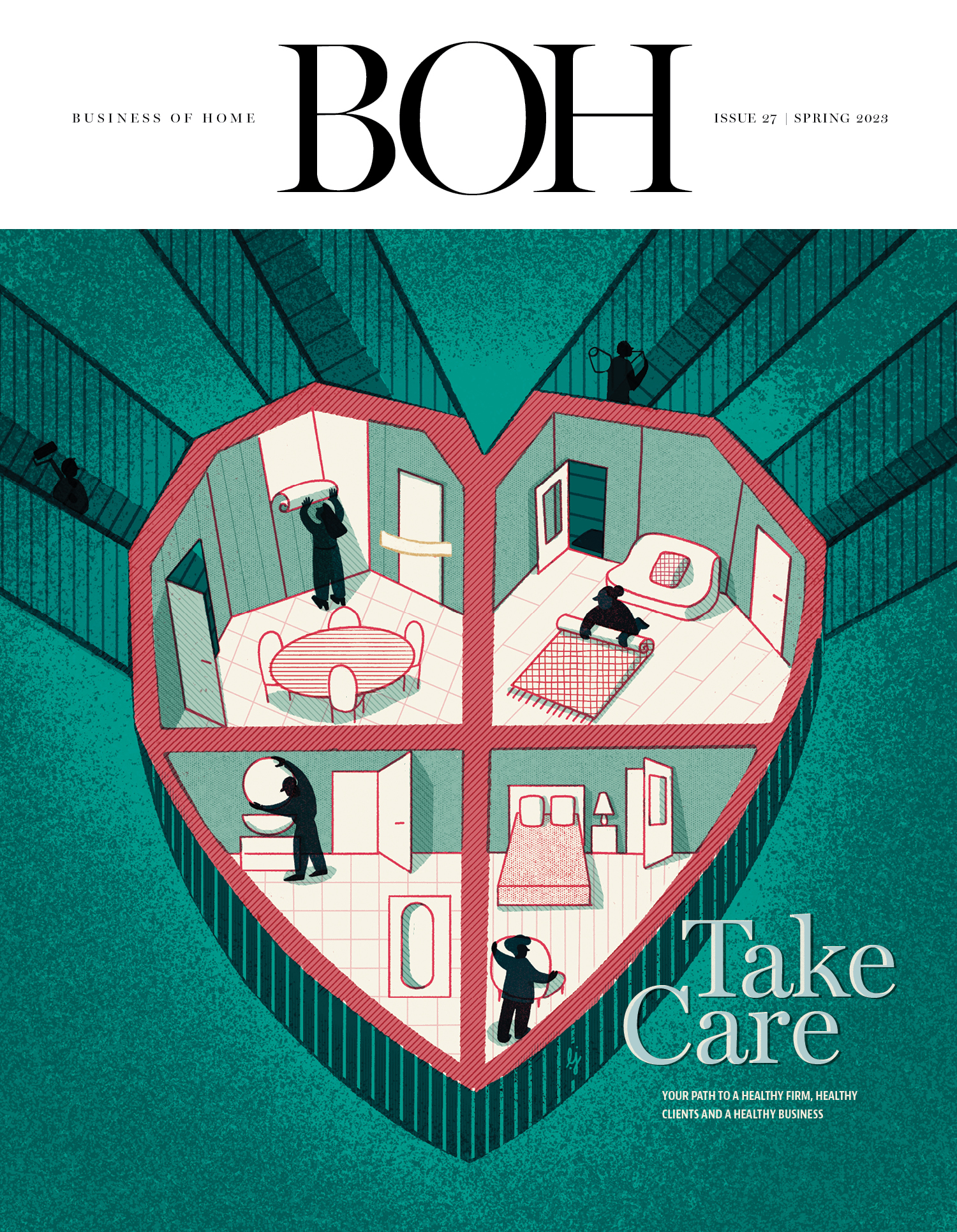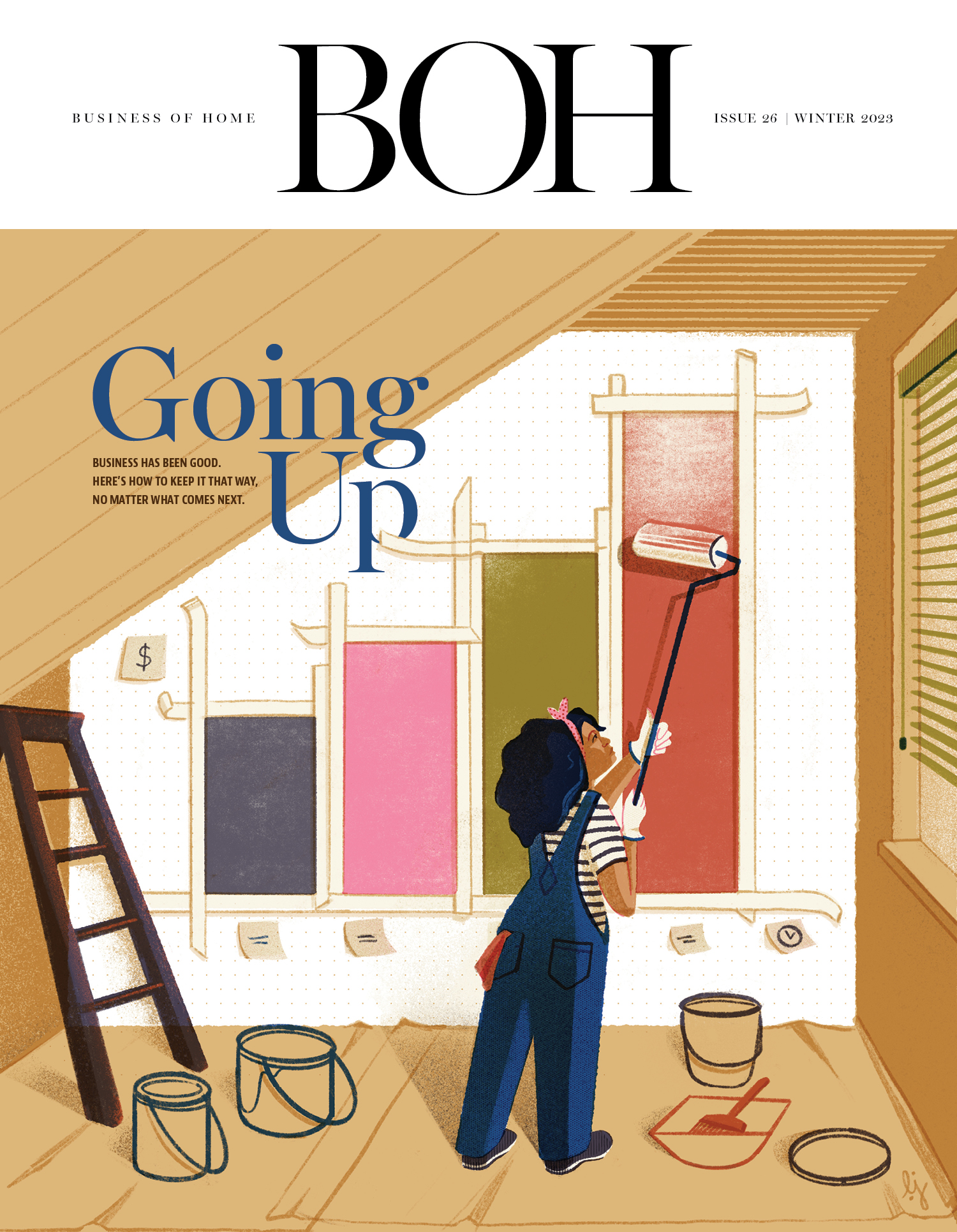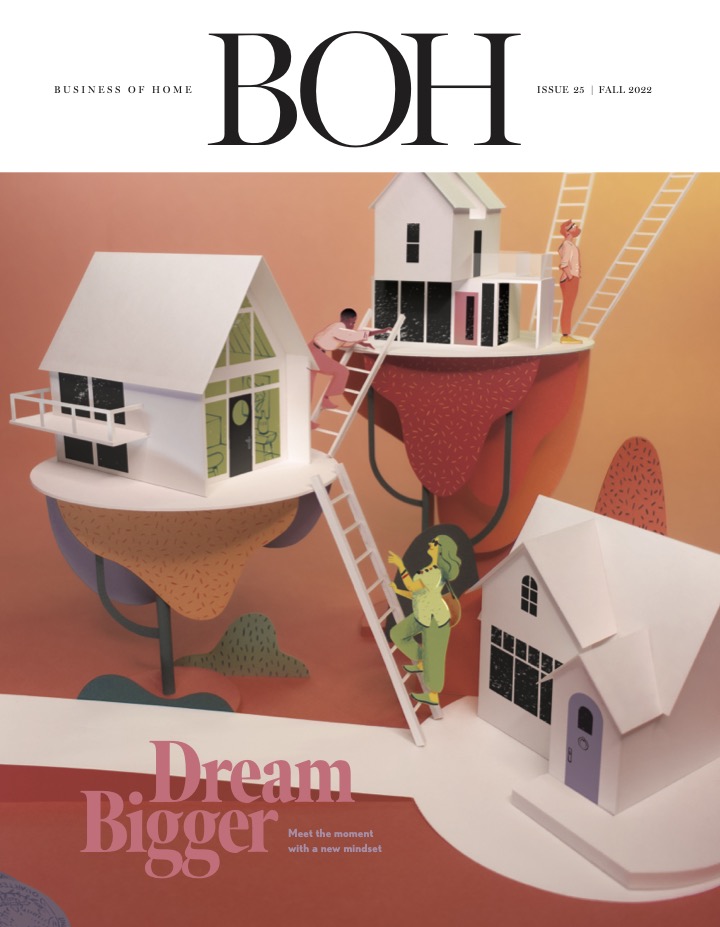When Daniel Shapiro launched his ceramics studio in his old hometown, he didn’t realize he was following in his great-grandfather’s footsteps. The St. Louis–area native, who was raised in the suburb of O’Fallon and studied advertising and marketing at the nearby Webster University, headed off to pursue graphic design in Miami and New York before landing in Los Angeles, where he worked in creative direction for brands including Google, Twitter and Apple. “[That work] wasn’t as creatively satisfying. You’re taking on somebody else’s brand voice—expressing yourself, but through the lens of another company. I was looking for something else, but not really connecting with anything,” he tells Business of Home. “I tried a bunch of things, [like photography and illustration]. Then a new ceramics studio opened down the street from our house, and my wife and I did a weekend class. The immediacy of making something in front of you—it being fully you and your decisions—was really satisfying. I was instantly obsessed with it.”
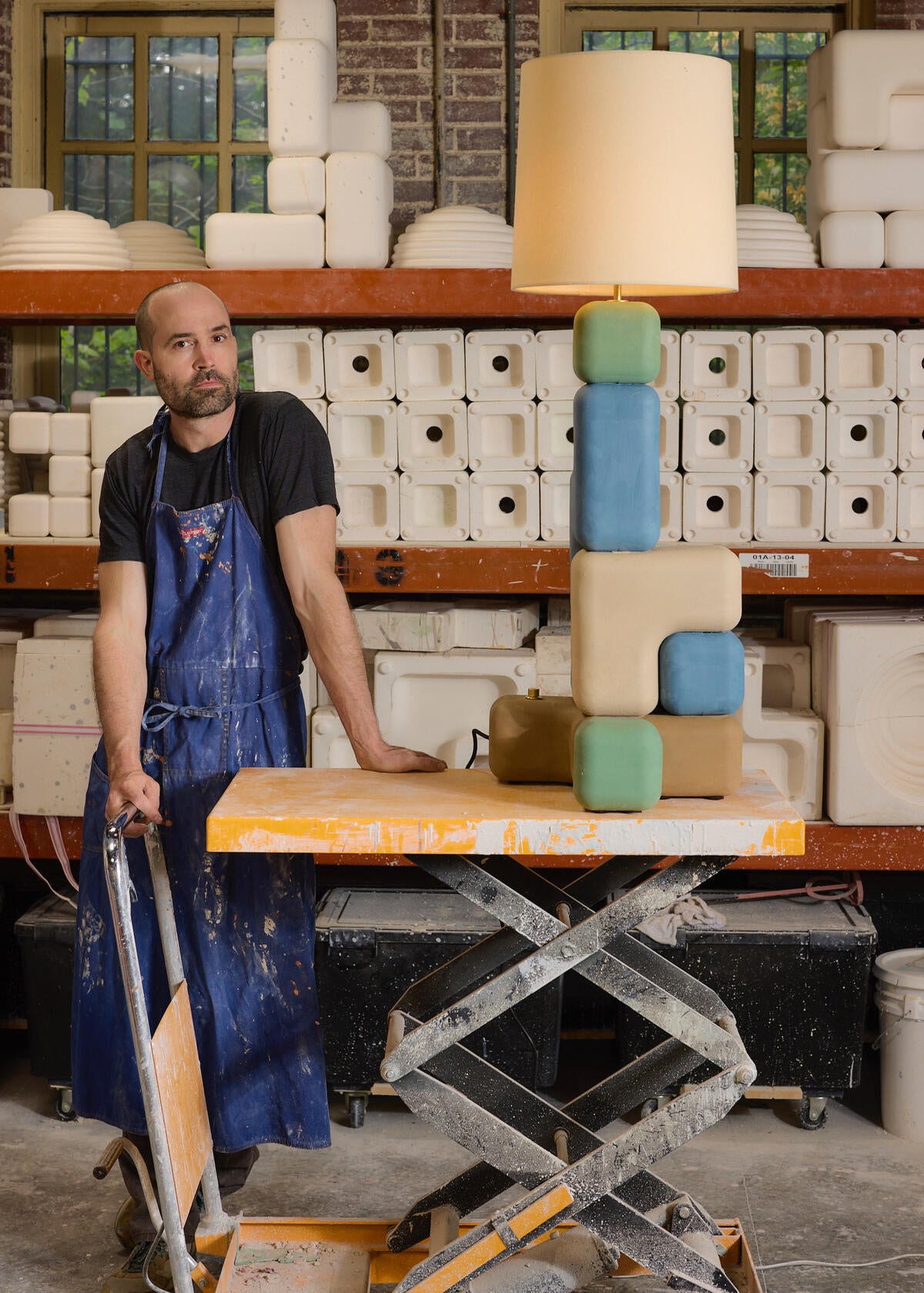
Shapiro left advertising after 20 years and dove headfirst into ceramics in 2017, finding that the craft was a “sleeper skill” of his. “It felt like being a kid or a teenager again, where you’re doing things for the first time, and that was such a nice thing to connect with again—just being an adult not knowing what you’re doing is cool,” he says. “Ever since I went through that, I try to put myself in those situations where I’m doing something for the first time, and I’m going to figure it out. I started with the wheel, and then I went to the extruder, and then I’ve just recently gone to mold making.” He began designing large-scale, hand-built lighting pieces and found representation in the Coup D’Etat showrooms in Los Angeles and San Francisco.
In 2021, the pandemic prompted him and his wife to move to St. Louis with their two young children in order to be closer to family. At the same time, Shapiro realized that he yearned to start a business that was scalable rather than based on one-off commissions. “I have to be the one in front of that work to make it happen. If I’m not the person doing it, it’s going to turn out to be a completely different piece, and not the thing that people are asking for,” he says. “I wanted to do something that could be a business [where] I could scale up, hire managers, monitor the quality and the design and all that, but have the production underneath me. That’s [how] Winkle [started].” The name comes from his great-grandfather Joseph Winkle’s St. Louis business, The Winkle Terra Cotta Co., something Shapiro didn’t even know existed. The manufacturer, founded in the late 1800s, specialized in slip-cast terra cotta architectural ornaments (think lions and gargoyles) for building facades across the Midwest. “I don’t really know about how things are passed down in us or in our brain chemistry, but when I found ceramics, there was just something that clicked with me in a way that any other kind of creative thing that I’ve done just didn’t,” he says. “So who knows? Maybe I’ve got a little bit of ceramic genetics.”
The studio launched its debut collection, Squared, at ICFF this past May, winning the Editors Award for best body of work. The mold-based, modular collection resembles sets of blocks and includes side tables, mirrors, and floor and table lamps. “The idea was [having] this modular system that I could design new pieces and not have to generate new molds every time,” he says. He found the inspiration for the collection while playing with his son and his blocks one Saturday. “I started to think about, ‘Gosh, if I can make a whole system of clay blocks, you can build anything,’” he says. “You can build it from a 10-inch table lamp or a little 5-by-5-inch sconce, all the way up to an 8-foot floor lamp.” He plans to use the molds to make larger-scale pieces that will still evoke playfulness and whimsy.

Winkle’s current studio is located in the carriage house of his early-1900s home in the historic Compton Heights neighborhood in St. Louis, a city he found to be the perfect place to build a design practice, thanks to its lower cost of living. “The space that I had in L.A. was a little studio apartment underneath our house. I could only have a small kiln, and the electricity was pretty crippling. It was like $2,000 a month for my kiln, [so] I just couldn’t do what I wanted there,” he says.
On August 6, digital marketer Jen Smiga guides designers on building meaningful, long-term business partnerships with brands that go beyond single product promotions to become ongoing storytelling opportunities. Click here to learn more and remember, workshops are free for BOH Insiders.
After leaving his original career, Shapiro has never looked back. “When I first started in advertising, my life was pretty one-dimensional. I was so career-driven that I was working from 8 o’clock in the morning to 2 or 3 in the morning, then driving home, going to sleep and going back to the agency. It was so hard to think up ideas that other people would identify [with] or appreciate,” he says. “I think that having a full life [with] dimension to it, and breaking away from work and building up other aspects actually makes your work a lot better if you’re in a creative field.”
To learn more about Winkle Ceramic Design, check out its website and Instagram.



